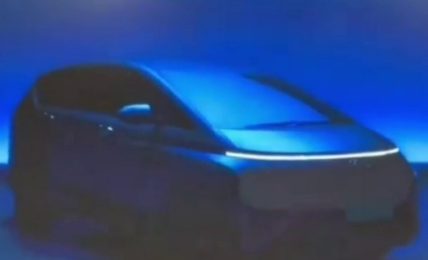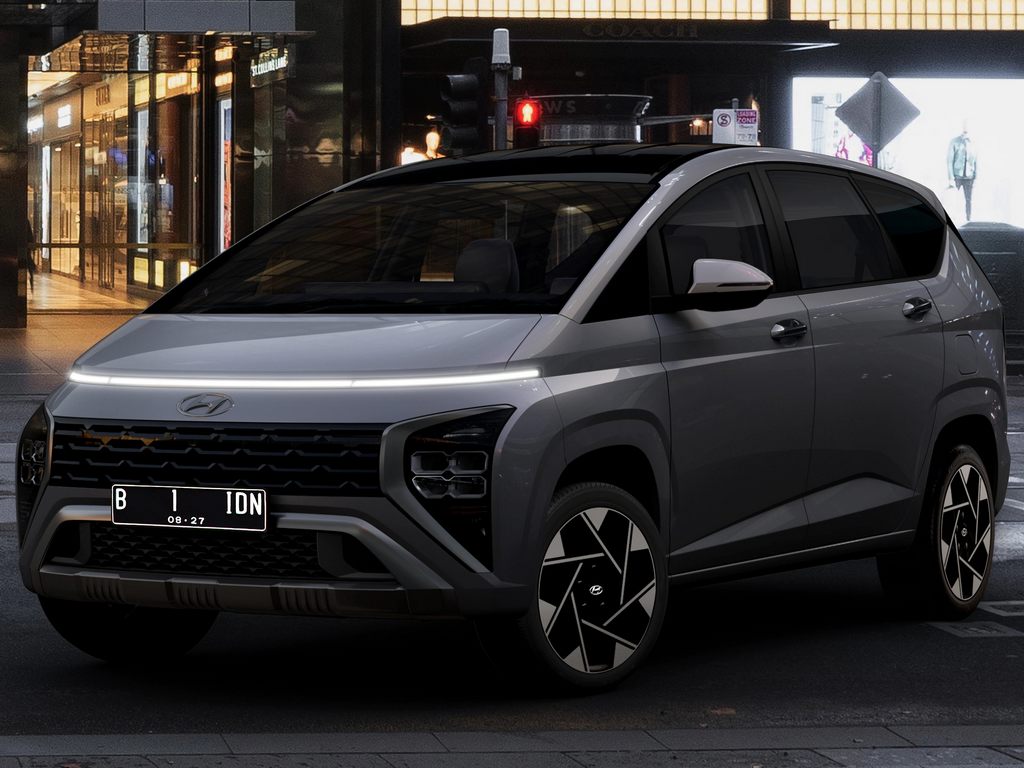
The global unveil of Hyundai Stargazer marks the company’s foray into the entry-level MPV segment
After a long teaser campaign, the global unveil of the Hyundai Stargazer has got over with the launch of the MPV in the Indonesian market. This has turned out to be significant development owing to the fact that the MPV has all the possibilities of getting launched in the Indian market very soon.
When brought here, it will sit alongside its cousin, Kia Carens, and rivals the likes of the Maruti Suzuki Ertiga, XL6, and the Mahindra Marazzo. The launch price of the MPV is from IDR 243,300,000 (Rs. 12.97 lakhs) to IDR 307,100,000 (Rs. 16.37 lakhs).
Coming to the looks, the overall silhouette of the car looks nearly like the first-gen Innova with a long and blunt nose. The MPV is huge in proportions like the Mahindra Marazzo with a clean flowing line across the body.
At the front, there’s a LED DRL strip that runs across the bonnet lip. Below the DRL, the LED headlight elements are neatly stacked in a recess on both the sides lined by body-coloured inserts.
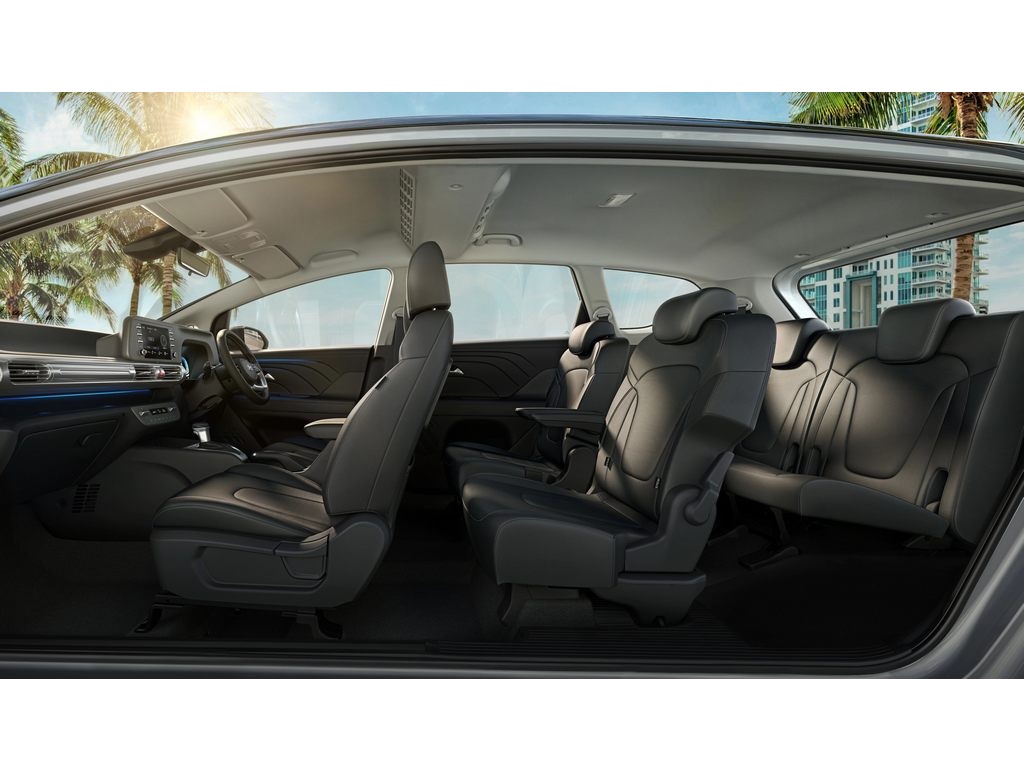
There’s a large main grille at the centre interrupted by a trapezoidal bottom grille that’s, again, lined with body-coloured inserts. The overall design at the front looks fresh out of the box and nothing like any Hyundai launched so far.
The company says, the Stargazer carries a sleek box typology with a curvy design that makes the cabin height perfectly optimised. The curvature of the vehicle ceiling gives the impression of a taller, spacious, and wider interior appearance, making it ideal for family trips.
At the sides, the MPV gets star-like looking diamond cut alloy wheels. There’s a prominent crease running below the pillars giving the car a fused look. The huge windshield can be prominently seen from the side quarters.
The rear gets Hyundai’s latest trademark LED H tail lamps, an interconnected unit seen on the new Venue as well. The tail gate looks protruding out for freeing up a little more space on the inside. The Hyundai logo sits in the middle and above the number plate recess.
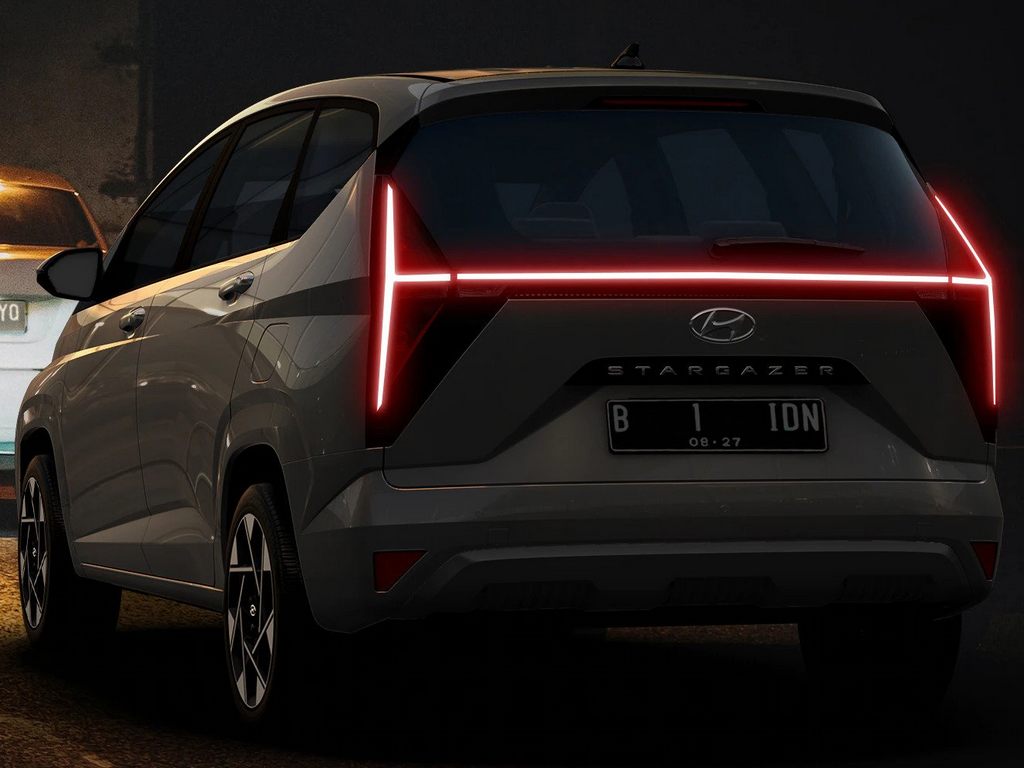
The rear bumper elements are minimal and the overall design looks clean and simple, just how a people-mover should look. The rear glass area is big with a lone wiper. The car also sports a roof-line spoiler.
On the inside, there’s just one thing, space. The MPV offers loads and loads of space which is never seen in its segment, including the Carens. The captain seats on the second row ooze out comfort and sophistication.
Each captain seat gets a dedicated arm rest. The seats can be adjusted forward, backward, upright, or reclined. Passengers who sit in the third row have easier access due to good space in the middle.
The dashboard, however, looks like the usual ones from Hyundai these days. There’s a free-standing 8-inch display with dials and tactile buttons. The centre AC vents and HVAC controls are present below.
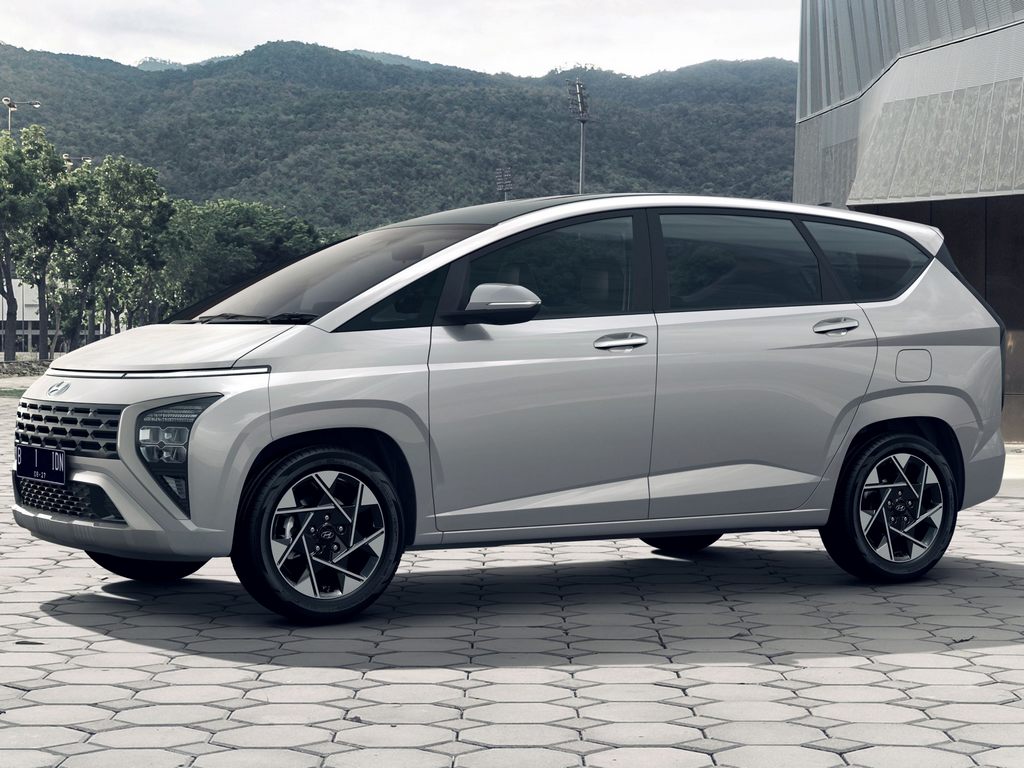
The car gets multifunctional storage spaces across the cabin including small trays, cup holders, extra pockets, and picnic tables.
The MPV features Hyundai’s Bluelink connected car tech which lets users know the current condition of the vehicle, turn on/off the engine, adjust cabin temperature, lock/unlock the door, honk, turn on/off the lights, and find out where the vehicle is parked.
Other features include stolen vehicle notification, vehicle tracking, immobilization, Auto Collision Notification, SOS/Emergency Assistance, Roadside Assistance, etc. Hyundai is also offering some ADAS functionalities.
Power comes from the same 1.5-litre MPI petrol engine from the Verna that churns out 113 HP at 6300 RPM and 144 Nm at 4500 RPM. The engine is mated to a iVT automatic transmission. In India, Hyundai will offer all of its engines and transmissions.


